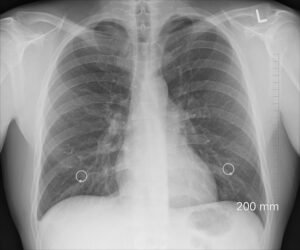Introduction
As a Rheumatologist working in a community setting, these words seem to be the Bain of my existence. Why are the words osteoporosis, osteoarthritis, and Rheumatoid arthritis so important for me. For a non-medical professional, these commonly cause confusion despite being quite distinct issues. The confusion starts with the medical language being Latin in origin. Latin used to be Lingua Franka of the world and for some time even after the fall of roman empire remained language of any respectful scientific documents. Slowly as English prevailed, medical language remained somewhat Latin.
Breaking down words to their origins
Let us break down our Latin words here. Osteo means bones, Rheum means flow, Arth means joint, itis means inflammation, and porosis means holes. So, word to word
- Osteoarthritis is inflammation of the joint bone (confusing much)
- Rheumatoid arthritis is inflammation of the joint flow
- Osteoporosis Holes in the bones
The word inflammation
To make it a bit clearer, let me tell you that word inflammation is overused, misused, and poorly understood. If you get a knife and cut my skin, I will develop inflammation. Inflammation is a normal body reaction to a stimulus. Inflammation is a protective mechanism. At times inflammation occurs without stimulus. That is the body starts creating inflammation response without any stimulus. We call that autoimmunity. We mean that the immune system, responsible for inflammation, is confused and attacks organs of the human and damage it. For sake of simplification, we docs explain it as overactive immune system. I assume a better explanation is misguided missile or friendly fires. Let us use word damage rather than inflammation to avoid confusion.
- Osteoarthritis is damage to the joint bones
- Rheumatoid arthritis is damage to the joint flow
Osteo vs Rheum
Osteoarthritis is damage to the bones of the joints from wearing out of the joints. Typically overuse or misuse leads to the joints wearing out. Although some metabolic issues such as diabetes can lead to faster osteoarthritis. Ok going to flow. Rheum is a Latin word describing one of the 4 alignments according to the Greek physician Galen of Pergamum. At one point in medical history, it was found that some individuals will get aggressive swelling of their joints without ANY movement or effort even the day before the swelling happened. These patients also could not move the joints on waking up for few hours and eventually some of them could get joint deformity rapidly. So, friction was not the cause for joint issue/pain. Then docs assumed that something elusive in our human body attacks these joints. Fast-forward, that elusive thing is our amazing immune system. The immune system flows in our blood and organs so maybe flow/Rheum is not a bad description.
Let us look at some statistics (albeit bit old) but to give impression of what you could have.
- Osteoarthritis is the joint pain and damage from friction (this is very common-26mill in USA)
- Rheumatoid arthritis is the joint pain and damage from misguided immune system (1.2 million is USA)
Osteoporosis
Then what is this business on osteoporosis? I have commonly seen medical interpreter tell my patients you have osteoarthritis when I told them to say osteoporosis in the other 2 languages I speak beside English. This blew my mind. I started telling my patients you have thin bones that can make it fracture. So why call it osteoporosis? Like any professional society such as engineers, lawyers, teachers, farmers, electricians, etc…. docs have a language they communicate with to expedite our work. However, each professional assumes that you ought to know their words. Believe me I was commonly confused when I was fixing my house and any professional starts speaking- even the word stucco sounded like ancient Greek for me. Going back to osteoporosis, so holes in the bones because the bone biological structure is made of cells and organized structures that are enforced by minerals such as calcium. As different biological changes happen, commonly loss of hormone in menopausal women, we lose the density of bones. We become more brittle and easier to fracture. Some medications can slow down or reverse the process. Let us review again:
- Osteoarthritis is the wear and tear of joints and typically is very common
- Rheumatoid arthritis is an autoimmune joint disease relatively uncommon but common for me as a Rheumatologist.
- Osteoporosis is bone thinning that can lead to fractures.
Summary from confusion to clarity
These confusions that medical society causes are one of the major reasons I am educating here. Commonly I get patients referred as Rheumatoid arthritis despite patients clearly being osteoarthritis patient. As a Rheumatologist or any specialist, we do not want to miss diagnosing a disease and we do trust our colleague in primary care world, and we trust our patients. This confusion though leads to a plethora of excessive work that is not needed. If I was in the patient’s shoes, I only want the least amount of testing done and only the ones that can lead to change in my care.
References
open page 16 for stats https://assets.contentstack.io/v3/assets/bltee37abb6b278ab2c/bltb4276e6740a51375/632a340a27a8dd5d8cd3ddc0/rheumatology-workforce-study-2015.pdf

https://creativecommons.org/licenses/by/2.0
Taylor JA, Bussières A -Chiropractic & manual therapies(2012)




Comments
Pingback: My joints are hurting, step-by-step guide - Medical Hermit
Pingback: Diabetes arthritis and pain quick guidance. ANA and Diabetes - Medical Hermit